|
Creature Feature by Alejandro Vivas
Nombre de la especie: La serpiente coral centro americana (Micrurus nigrocinctus). Taxonomía: La serpiente coral centro americana es una serpiente de la familia Elapidae y del género Micrurus. “nigrocintus” por su particular patrón de cintas negras. Historia natural: Esta serpiente de llamativos colores habita desde México hasta la zona norte de Colombia. Tiene hábitos nocturnos y se alimenta de otras serpientes o ranas u otros pequeños reptiles mediante una mordedura que posee un potente veneno neurotóxico que conlleva a que la respiración de su presa falle. Dato curioso: Aunque su potente veneno tiene una muy mala reputación, estas serpientes son muy gentiles y dudaran en escapar al ver a un humano. Las mordeduras más recurrentes por estas serpientes se deben a que son manipuladas indebidamente por personas. Otro dato curioso es que cuando se sienten amenazadas esconden su cabeza y muestran su cola, la cual enroscan y sacuden para confundir a su atacante y posteriormente defenderse. Species Name: Central American coralsnake (Micrurus nigrocinctus). Taxonomy: The Central American coral snake is a snake of the family Elapidae and the genus Micrurus, named "nigrocinctus" for its distinctive pattern of black bands. Natural History: This snake with striking colors inhabits regions from Mexico to the northern zone of Colombia. It has nocturnal habits and feeds on other snakes, frogs, or other small reptiles through a bite that carries a potent neurotoxic venom, leading to respiratory failure in its prey. Interesting Fact: Despite having a notorious reputation for its potent venom, these snakes are quite gentle and will hesitate to confront humans. Most snakebites from these species occur when they are mishandled by people. Another interesting fact is that when they feel threatened, they hide their heads and display their tail, which they coil and shake to confuse their attacker and subsequently defend themselves. Creature Feature by Jaden Keller
Species Name: Bullet ant (Paraponera clavata) Taxonomy: Family Formicidae in the order Hymenoptera. Natural History: Bullet ants live in Central and South America and can reach up to 30mm (1.2 in) in length. The average lifespan of a worker ant is 90 days. Workers spend days foraging for food to bring back to the colony. This large ant is known for it's extremely painful sting. Fun Fact: I picked the bullet ant for the creature feature because I find it fascinating that something so small can produce so much pain in a human. Also, the ant in picture can be seen holding a bee in its mandibles. Creature Feature by Nathaly Ponce
Nombre de la especie: Larva de Mosca Buho (Ascalaphidae) Taxonomía:Este insecto pertenece a la familia Ascalaphidae, suborden Myrmeleontiformia (están estrechamente relacionadas con las hormigas león) y pertenecen al orden Neuroptera. Historia natural:Los adultos de esta especie lucen similar a las libélulas, pero con largas antenas y hábitos crepusculares o dirunos. Además de que pueden liberar un fuerte químico similar al almizcle si son molestados. Los adultos son depredadores aéreos de otros insectos mientras que las larvas suelen estar camufladas en el suelo o vegetación en donde se esperan para emboscar a sus presas con ayuda de sus mandíbulas prominentes. Cuentan con una amplia distribución en áreas templadas y tropicales de todo el mundo. Dato curioso: Escogí esta criatura debido a su peculiar aspecto. Lo encontré camuflado en los senderos del parque Soberanía de Panamá y me fue difícil identificar qué clase de animal era, pero me recordaba a alguna especie de fósil viviente. De hecho, al investigar descubrí que su aparición remonta al Mesozoico medio y que se han encontrado fósiles de adultos y larvas preservados en ámbar. Creature Feature by Yanileth López-Tacoaman
Nombre de la especie: El látigo del Amazonas (Chironius carinatus). Taxonomía: Serpiente del género Chironius en la familia Colubridae. Historia natural: Esta serpiente es una colúbrida larga y delgada, no venenosa, ovípara y arbórea diurna que habita preferentemente en las selvas tropicales de tierras bajas, pero también se encuentra en bosques montanos húmedos, así como en biomas de formación abierta, incluido Panamá. Su dieta principal son las ranas, lagartijas, ratones y aves. Dato curioso: Cuando vi la serpiente, estaba en pipeline road donde normalmente atrapamos a la mayoría de nuestras lagartijas, y me pareció divertido que al mismo tiempo que buscábamos lagartijas, la serpiente también las buscaba para comérselas. Es decir, esta serpiente es una de nuestras principales competencias que tenemos a la hora de encontrar lagartijas y poder llevar a cabo nuestro proyecto, sin embargo no deja de ser hermosa y poder verla fue un gran acontecimiento para mí. Species name : Amazon coachwhip (Chironius carinatus). Taxonomy: Snake of the genus Chironius in the family Colubridae. Natural History: This snake is a long and slender, nonvenomous colubrid, oviparous and diurnal arboreal inhabiting preferably lowland tropical rainforests, but being also found in humid montane forests as well as open-formation biomes, including Panama. Its main diet is frogs, lizards, mice and birds. Fun Fact: When I saw the snake it was in the pipeline road where we normally catch most of our lizards, and I found it amusing that at the same time that we were looking for lizards the snake was also looking for them to eat. That is to say, this snake is one of our main skills when finding lizards and being able to carry out our project, however it is still beautiful and being able to see it was a great event for me. Yanileth attended the Universidad Regional Amazonica Ikiam in Napo, Ecuador and is a 2023 Evolution In Action participant. We asked Yanileth a few questions about her experience and interests.
¿Cuál es su especialidad? Ingeniería Biotecnológica. ¿Cuáles son sus intereses profesionales actuales? A lo largo de mi carrera universitaria me gusto estudiar los sistemas biológicos, saber cómo funcionan y qué uso podrían tener. Esto para poder encontrar soluciones a problemáticas que el mundo enfrenta actualmente, especialmente el calentamiento global, la resistencia antimicrobiana y la falta de salud alimentaria. Mi investigación de pregrado se basó en la búsqueda de biomoléculas en anfibios endémicos de Ecuador, mi país, para combatir la creciente problemática de la resistencia antimicrobiana. También estuve involucrada en varios proyectos de extracción de metabolitos de plantas y la creación de huertos medicinales en zonas rurales de la Amazonia Ecuatoriana. ¿Por qué le interesó unirse al programa de la EIA? Mientras buscaba oportunidades de pasantías, encontré el programa EIA y este cumplía con todas las aspiraciones que tenía para unirme a un programa. El EIA contaba con una parte de campo y otra de laboratorio, lo que me encantaba y al mismo tiempo intentan entender de mejor manera como el cambio climático afecta a las lagartijas que son organismos termosensibles. Por lo que las respuestas que genera el proyecto podrían ayudar a entender mejor cómo les afectaría a otros animales del Neotrópico y de esta manera intentar proponer una solución. Estas fueron las principales razones por las que decidí unirme al proyecto y considero que fue una gran decisión. ¿Qué es lo más interesante que ha visto o aprendido desde que empezó el proyecto en Panamá? Desde que me uní al programa he vivido muchas cosas asombrosas. Vi por primera vez animales en su estado natural libremente, y como bióloga es una cosa que me fascina. Las salidas de campo, tanto en mainland como en las islas es un mundo maravilloso, puedes ver paisajes increíbles y disfrutar de estar al aire libre. Además, también aprendí mucho sobre salidas de campo, toma de datos, captura y manejo de lagartijas, los cuales son animales super lindos. Por otro lado, el trabajo en laboratorio también hace que me dé cuenta que el correcto manejo de los individuos es fundamental para unos buenos resultados. En general, el trabajo que se hace en este proyecto es genial, además de que también trabajamos con gente asombrosa, lo que hace que este muy feliz de formar parte de este programa What is your major? Biotechnology Engineering What are your current career interests? Throughout my university career I liked studying biological systems, knowing how they work and what use they could have. I wanted to be able to find solutions to problems that the world currently faces, especially global warming, antimicrobial resistance and lack of food health. My undergraduate research was based on the search for biomolecules in amphibians endemic to Ecuador, my country, to combat the growing problem of antimicrobial resistance. I was also involved in various projects for the extraction of plant metabolites and the creation of medicinal gardens in rural areas of the Ecuadorian Amazon. Why were you interested in joining the EIA program? While looking for internship opportunities, I found the EIA program and it fulfilled all the aspirations I had related to an academic program. The EIA had a field and a laboratory component, which I loved and at the same time they tried to better understand how climate change affects lizards, which are thermosensitive organisms. Therefore, the responses generated by the project could help to better understand how it would affect other Neotropical animals and thus try to propose a solution. These were the main reasons why I decided to join the project and I think it was a great decision. What is something cool or interesting that you have seen or learned since you started on the project in Panama? Since joining the program I have experienced many amazing things. I saw animals in their natural habitat freely for the first time, and as a biologist it is something that fascinates me. Field trips, both in the mainland and on the islands are a wonderful experience, you can see incredible landscapes and enjoy being outdoors. In addition, I also learned a lot about field trips, data collection, capture and management of lizards, which are super cute animals. On the other hand, the work in the laboratory also makes me realize that the correct handling of the individuals is essential for good results. Overall, the work that is being done on this project is great, plus we also work with amazing people, which makes me very happy to be a part of this program. Carrie is a student at Florida International University and a 2023 Evolution In Action participant. We asked Carrie a few questions about her experience and interests.
¿Cuál es su especialidad? Recientemente me gradué con una licenciatura en ciencias biológicas de Florida International University. ¿Cuáles son sus intereses profesionales actuales? Siempre me ha apasionado ayudar a los animales y aprender continuamente, por lo que opté por seguir una carrera como veterinaria especializada en animales pequeños y exóticos. ¿Por qué le interesó unirse al programa de la EIA? Este programa me interesó porque quería comprender mejor la metodología y el análisis de la investigación. También estaba intrigado porque se me permitió trabajar con científicos expertos y experimentados que sabía que me ayudarían a aprender y crecer en el laboratorio y el campo. Además, estaba súper emocionada de visitar un lugar como Panamá, tropical, y experimentar la inmensa diversidad de herps. ¿Qué es lo más interesante que ha visto o aprendido desde que empezó el proyecto en Panamá? Tanto los reptiles como los anfibios siempre me han fascinado, y ver nuevas especies en persona ha sido increíble. Mi parte favorita ha sido ver las diferentes especies de anolis en Panamá y compararlas con las de Miami, Florida. Los que he visto incluyen: Anolis biporcatus, Anolis apletophallus, Anolis frenatus, Anolis capito y Anolis auratus. What is your major? I recently graduated with a bachelor's in biological sciences from Florida International University. What are your current career interests? I have always had a passion for helping animals and continuously learning, so I chose to pursue a career as a veterinarian specializing in small animals and exotics. Why were you interested in joining the EIA program? This program interested me because I wanted to better understand research methodology and analysis. I was also intrigued because I was allowed to work with knowledgeable and experienced scientists who I knew would help me learn and grow in the laboratory and field. Moreover, I was super excited to visit a place like Panama, tropical, and experience the immense diversity of herps. What is something cool or interesting that you have seen or learned since you started on the project? Both reptiles and amphibians have always fascinated me, and seeing new species in person has been unbelievable. My favorite part has been seeing the different anole species in Panama and comparing them to those in Miami, Florida. Those that I've seen include: Anolis biporcatus, Anolis apletophallus, Anolis frenatus, Anolis capito, and Anolis auratus. Alejandro is a student at Icesi University in Cali, Colombia and a 2023 Evolution In Action participant. We asked Alejandro a few questions about his experience and interests.
¿Cuál es su especialidad? Soy Alejandro Vivas, un estudiante de último año de la carrera de Biología en la Universidad Icesi en Cali, Colombia. Mi pasión se encuentra en el campo de la ecofisiología y su relación con el cambio climático. Estoy profundamente interesado en comprender cómo varían las características de la sangre de los reptiles (específicamente Anolis) y cómo interactúan con los parásitos sanguíneos cuando son trasladados a nuevas elevaciones debido al cambio climático. ¿Cuáles son sus intereses profesionales actuales? La razón por la que quería unirme a este programa es que parecía una gran oportunidad para formar parte de un proyecto de investigación muy importante y a gran escala, alineado con mis aspiraciones futuras. Por lo tanto, vi esto como una oportunidad para aprender nuevas técnicas, obtener diferentes perspectivas y comprender cómo se lleva a cabo la ciencia fuera de mi país, y compartir conocimientos de diferentes culturas. Esto ampliará mis horizontes y me permitirá plantear nuevas preguntas que necesitan respuestas. ¿Por qué le interesó unirse al programa de la EIA? A lo largo del proyecto, hemos llevado a cabo una amplia variedad de tareas intrigantes. Sin embargo, dos aspectos específicos han llamado especialmente mi atención. En primer lugar, la aplicación de la transcriptómica para comprender cómo la fisiología térmica afecta a los lagartos a nivel molecular. En segundo lugar, el estudio de la relación entre los parásitos (tanto anélidos como ectoparásitos) y la fisiología térmica de estos reptiles. Estos problemas presentan desafíos que me gustaría investigar más en el futuro, centrándome en la relación entre el cambio climático y la parasitología de los reptiles. ¿Qué es lo más interesante que ha visto o aprendido desde que empezó el proyecto en Panamá? Estoy emocionado de seguir adentrándome en estas áreas y contribuir, de alguna manera, al conocimiento y la conservación de estos fascinantes seres vivos. What is your major?I am Alejandro Vivas, a final year student of the Biology major at the Icesi University in Cali, Colombia. My passion lies in the field of ecophysiology and its relationship with climate change. I am deeply interested in understanding how the blood characteristics of reptiles (specifically Anolis) vary and how they interact with blood parasites should they be moved to new elevations by climate change. What are your current career interests? The reason why I wanted to join this program is that it seemed like a great opportunity to be part of a very important and large-scale research project aligned with my future aspirations. Therefore, I saw this as an opportunity to learn new techniques, gain different perspectives and understand how science is conducted outside my country, and share knowledge from different cultures. This will broaden my horizons and allow me to ask new questions that need answers. Why were you interested in joining the EIA program? Throughout the project, we have undertaken a wide variety of intriguing tasks. However, two specific aspects have particularly caught my attention. First, the application of transcriptomics to understand how thermal physiology affects lizards at the molecular level. Secondly, the study of the relationship between parasites (both annelids and ectoparasites) and the thermal physiology of these reptiles. These issues present challenges that I would like to investigate further in the future, focusing on the relationship between climate change and reptile parasitology. What is something cool or interesting that you have seen or learned since you started on the project in Panama? I am excited to continue delving into these areas and contribute, in some way, to the knowledge and conservation of these fascinating living beings. Jaden is a student at the University of Nevada Reno and a 2023 Evolution In Action participant. We asked Jaden a few questions about his experience and interests.
What is your major/degree/program of study? I am currently an undergraduate student at University of Nevada, Reno. My major is Wildlife Ecology and Conservation. What are your current career interests? I would really like to do research in the future. I want to do research on reptiles or amphibians, mainly lizards or salamanders. Why were you interested in joining the EIA program? I was interested in joining the EIA program because I thought that this would be a great opportunity for me to learn about this field of study while also getting valuable on the job experience. What is something cool or interesting that you have seen or learned since you started on the project in Panama? Since being in Panama I have come to realize that there is much more diversity in the genus of Anolis than I had originally thought. I really enjoy learning about the different species of anoles in Panama. Nathaly Ponce is a student at Pan-American Agricultural School Zamorano and a 2023 Evolution in Action participant. We asked Nathaly a few questions about her experiences and interests.
¿Cuál es su especialidad? Tengo un título como ingeniera en Ambiente y Desarrollo otorgado por la Escuela Agrícola Panamericana Zamorano. ¿Cuáles son sus intereses profesionales actuales? Me encantaría continuar haciendo investigación, estoy especialmente interesada en hacer bioprospección con hongos. Puesto que creo que los hongos tienen un potencial increíble en la industria de medicinas, alimentos y agricultura. ¿Por qué le interesó unirse al programa de la EIA? Me animé a unirme a este programa porque estaba buscando mejorar mis capacidades como investigadora tanto en actividades de campo como en laboratorio. A pesar de que previamente no tenia experiencia en temas de evolución, me gusta aprender sobre distintas temáticas así que también estaba interesada en aprender algo nuevo. ¿Qué es lo más interesante que ha visto o aprendido desde que empezó el proyecto en Panamá? Antes de esto no tenia idea de lo rápido que los anolis se adaptan a los cambios en su entorno. En términos de evolución pensaba que los cambios no serían perceptibles hasta dentro de muchas generaciones. Así que me parece muy cool el poder apreciar como estos animales están cambiando y cómo podríamos tomar esto como referencia para estudios sobre adaptabilidad al entorno y al cambio climático. What is your major/degree/program of study? I have a degree in Environmental and Development engineering at Pan-American Agricultural School Zamorano. What are your current career interests? I would love keep doing research, I’m especially interested in do bioprospection with fungi. I believe they have an amazing potential in medicine, food or agricultural industry. Why were you interested in joining the EIA program? I was encouraged to join this program because I was looking to improve my skills as a researcher in both field and laboratory activities. Although I had no previous experience in evolution, I like to learn about different topics so I was also interested in learning something new. What is something cool or interesting that you have seen or learned since you started on the project in Panama? Before this I had no idea how quickly anoles adapt to changes in their environment. In terms of evolution, I thought the changes would not be noticeable for many generations. So, I find it very cool to be able to appreciate how these animals are changing and how we could take this as a reference for studies on adaptability to the environment and climate change. The 2023 field season and Evolution in Action Program has begun! Stay tuned for updates and to learn more about our talented participants.
|
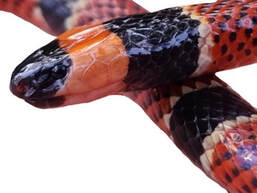
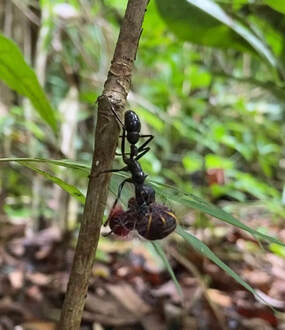
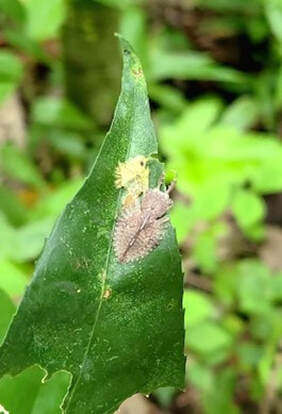
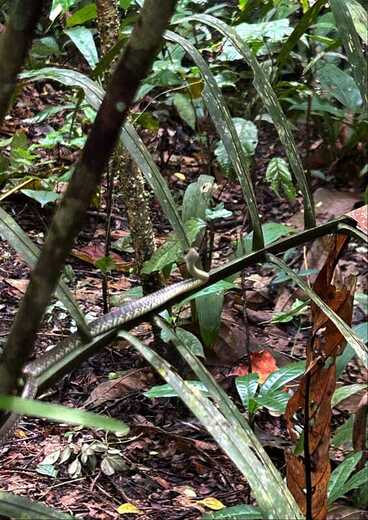
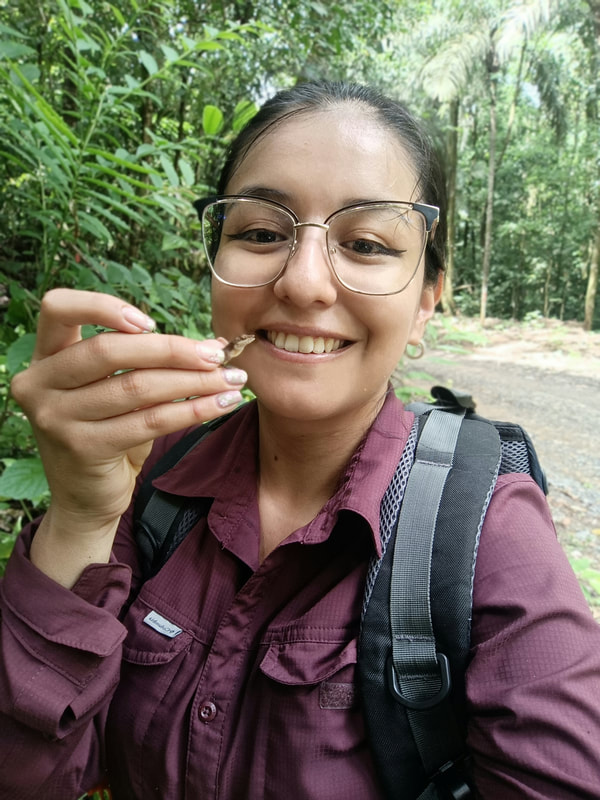
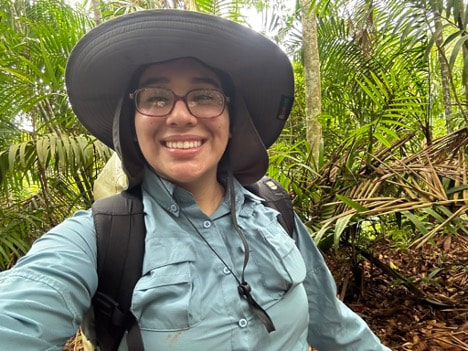
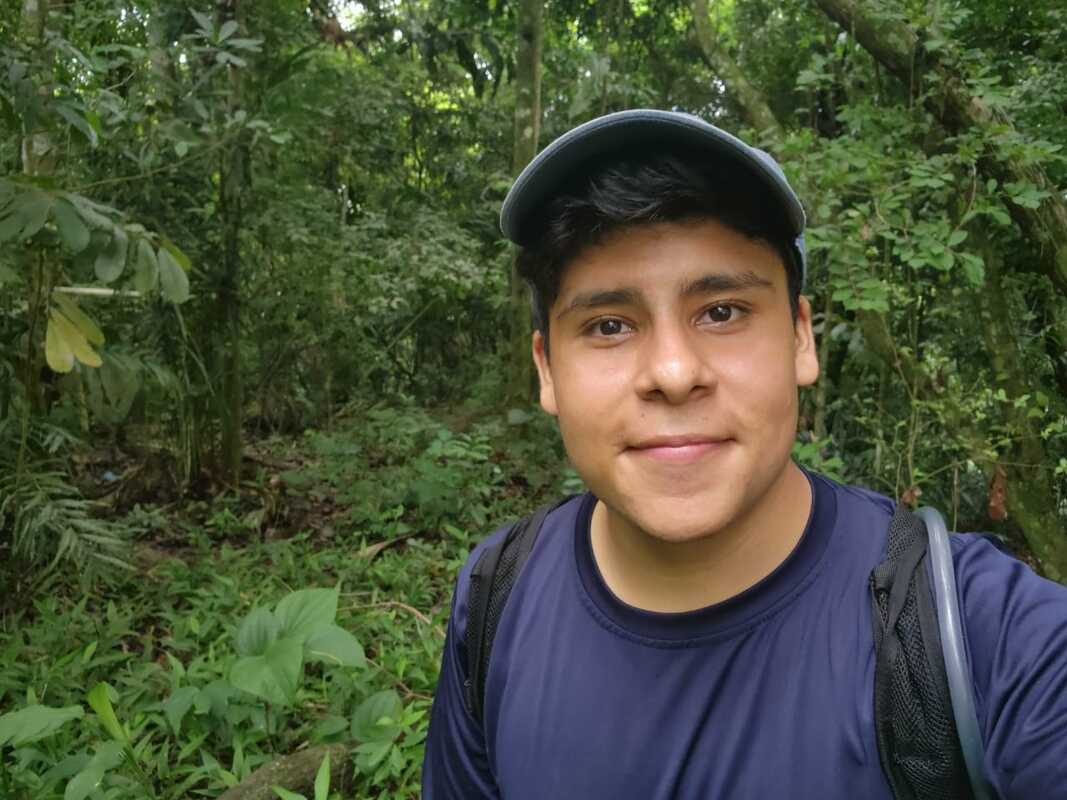
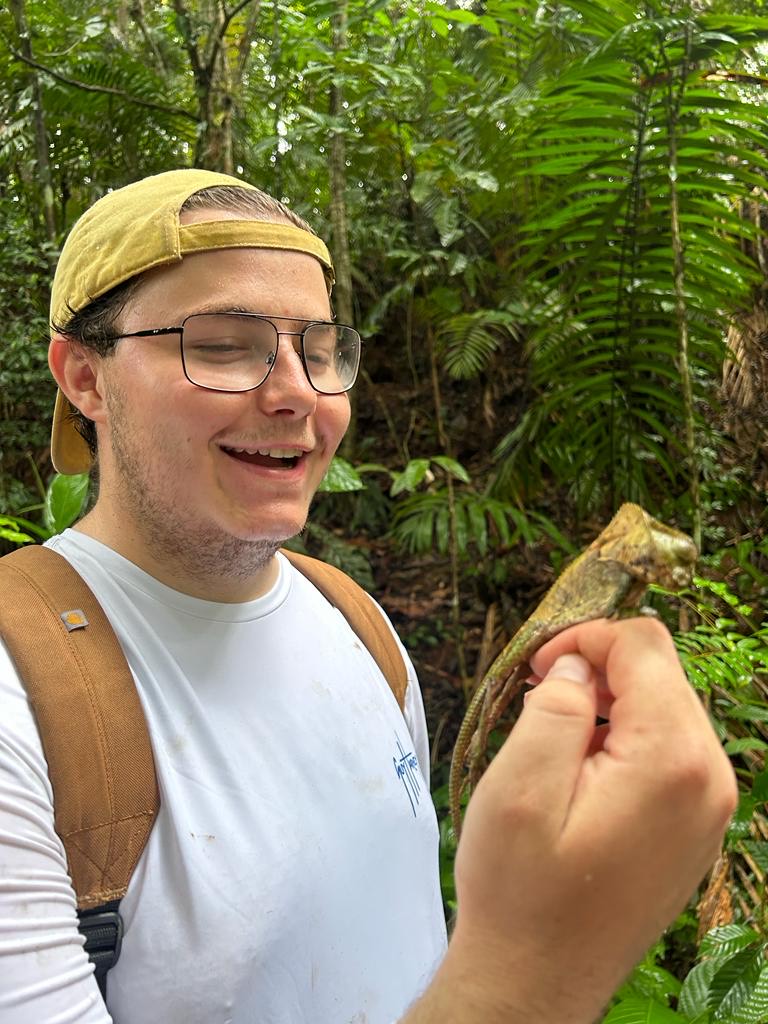
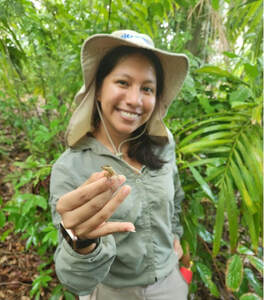
 RSS Feed
RSS Feed